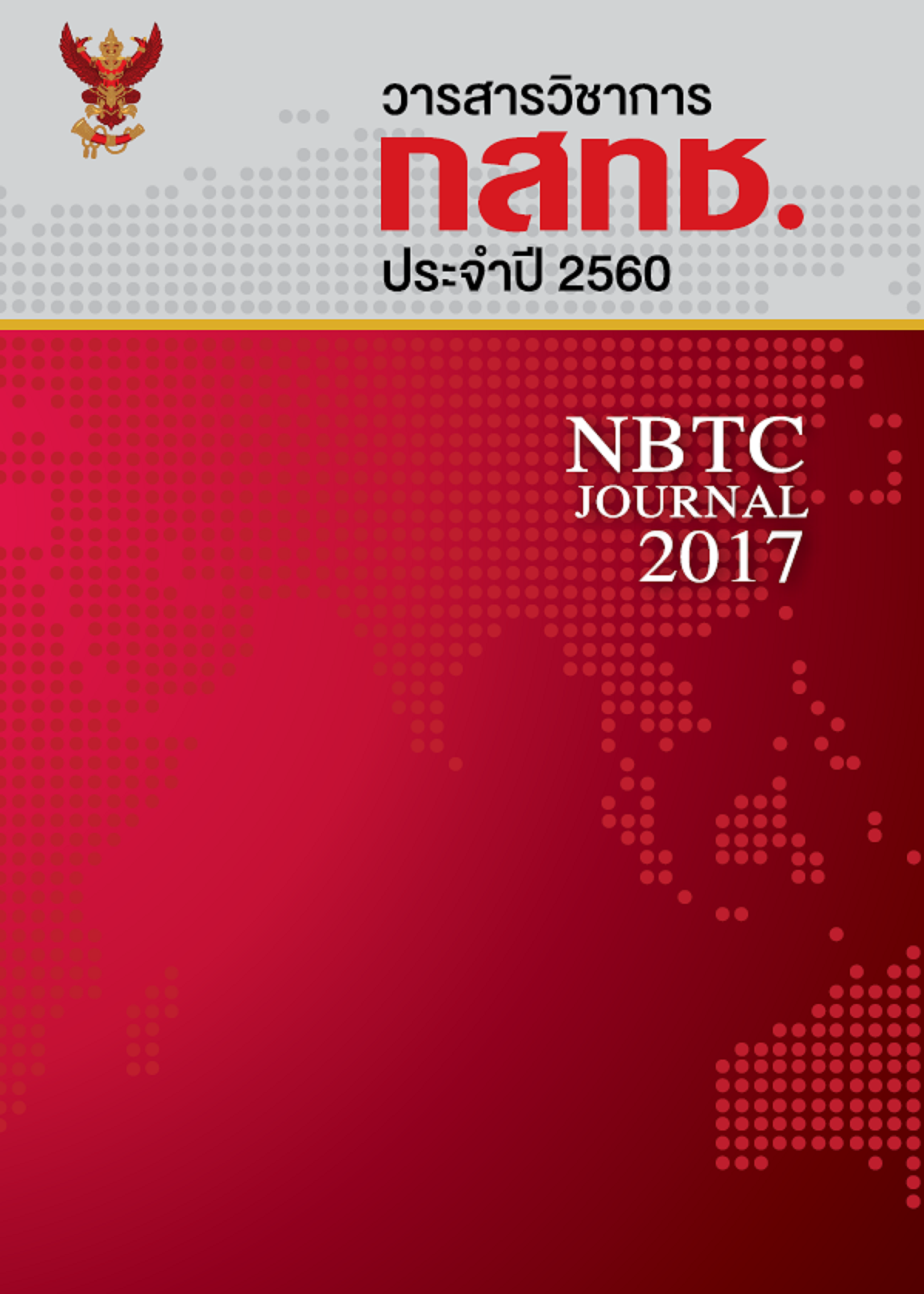Modern Communication Culture and Working among Teachers in Bangkok Metropolis
Keywords:
Modern Communication Culture, Working, Teachers in Bangkok MetropolisAbstract
The objective of this study is to explore the relationship between personal characteristics, knowledge, attitudes, meanings, and value of online communication and online communication culture of the teachers in schools under the governance of Department of Education BMA. This study adopted both quantitative and qualitative methods by utilizing questionnaire survey and group and in-depth interviews. The sample group comprises 641 teachers from 44 schools under the governance of Department of Education BMA. The study was conducted from April to August 2017. The key informants of both interviews consists of 20 teachers and school executives from 10 schools. The findings revealed that 50.1 percent of teachers own a smartphone. Their level of knowledge of using online communication for teaching and learning is high. They have pretty good attitude toward using communication technology for teaching and learning. They also see that online communication media helps them receive news and information as well as work faster and more conveniently. The statistically significant important factors relevant to teachers’ online communication are age, income, knowledge, skill, attitude, ownership of communication equipment, and policy awareness. This study, therefore, supports schools under the administration of Department of Education BMA to apply online communication in learning and teaching and simultaneously to promote the appropriate use of online communication for students by providing both knowledge and better utilization of online communication.
References
ฐิตินันทน์ ผิวนิล และ พิมลพรรณ อิศรภักดี. (2558). พฤติกรรมการสื่อสารผ่านเทคโนโลยีกับภาวะสุขภาพใจของนักเรียนระดับมัธยมศึกษาในจังหวัดกาญจนบุรี. วารสารธรรมศาสตร์. 34 (2) พฤษภาคม-สิงหาคม. DOI : 10.14456/tujournal.2015.7
มหาวิทยาลัยศิลปากร. (2556). (ร่าง) แผนแม่บทเทคโนโลยีสารสนเทศและการสื่อสารเพื่อการศึกษา กระทรวงศึกษาธิการ พ.ศ. 2557-2559. สืบค้นเมื่อ 27 มีนาคม 2560 จากhttps://www.thailibrary.in.th/2014/07/28/ict-moe-master-plan2557/ documents-for-download.html
วสันต์ ปัญญาแก้ว (2559). สื่อและชีวิตประจำวันในโลกสมัยใหม่. ใน วสันต์ ปัญญาแก้ว (บรรณาธิการ). โลกสมัยใหม่ในชีวิตประจำวัน. (หน้า 141-158). เชียงใหม่ : ภาควิชาสังคมวิทยาและมานุษยวิทยา คณะสังคมศาสตร์ มหาวิทยาลัยเชียงใหม่.
สำนักการศึกษา กรุงเทพมหานคร. (2559). แผนพัฒนาการศึกษาขั้นพื้นฐานกรุงเทพมหานคร ฉบับที่ 2 (พ.ศ. 2560-2563. กรุงเทพฯ : โรงพิมพ์ชุมนุมสหกรณ์การเกษตรแห่งประเทศไทย จำกัด.
สำนักงานกองทุนสร้างเสริมสุขภาพแห่งชาติ (2559). วัฒนธรรมการอ่าน นิยมสื่อออนไลน์เพิ่ม. สืบค้นเมื่อ 27 มีนาคม 2560 จาก https://www.thaihealth.or.th/Content/30402-วัฒนธรรมการอ่าน%20นิยมสื่อออนไลน์เพิ่ม.html
สำนักงานเลขาธิการสภาการศึกษา กระทรวงศึกษาธิการ. (2554). แนวทางการดำเนินงานเพื่อขยายผลการพัฒนาศักยภาพครูและบุคลากรทางการศึกษาในการใช้สื่อเทคโนโลยีเพื่อการศึกษาเรียนรู้ตลอดชีวิต. กรุงเทพฯ: สำนักนโยบายด้านการเรียนรู้ตลอดชีวิตและโอกาสทางการศึกษา สำนักงานเลขาธิการสภาการศึกษา กระทรวงศึกษาธิการ.
สำนักงานสถิติแห่งชาติ. (2559). สรุปผลที่สำคัญสำรวจการมีการใช้เทคโนโลยีสารสนเทศและการสื่อสารในครัวเรือน พ.ศ. 2558. กรุงเทพฯ: สำนักงานสถิติแห่งชาติ.
Downloads
Published
How to Cite
Issue
Section
License
The Office of the NBTC holds the copyright of articles appearing in the journal. The Office of the NBTC allows the public or individuals to distribute, copy, or republish the work under a Creative Commons license (CC), with attribution (BY), No Derivatives (ND) and NonCommercial (NC); unless written permission is received from the Office of the NBTC.
Text, tables, and figures that appear in articles accepted for publication in this journal are personal opinion and responsibility of the author, and not binding on the NBTC and the Office of the NBTC. In case of errors, each author is solely responsible for their own article, and not concerning the NBTC and the NBTC Office in any way.



